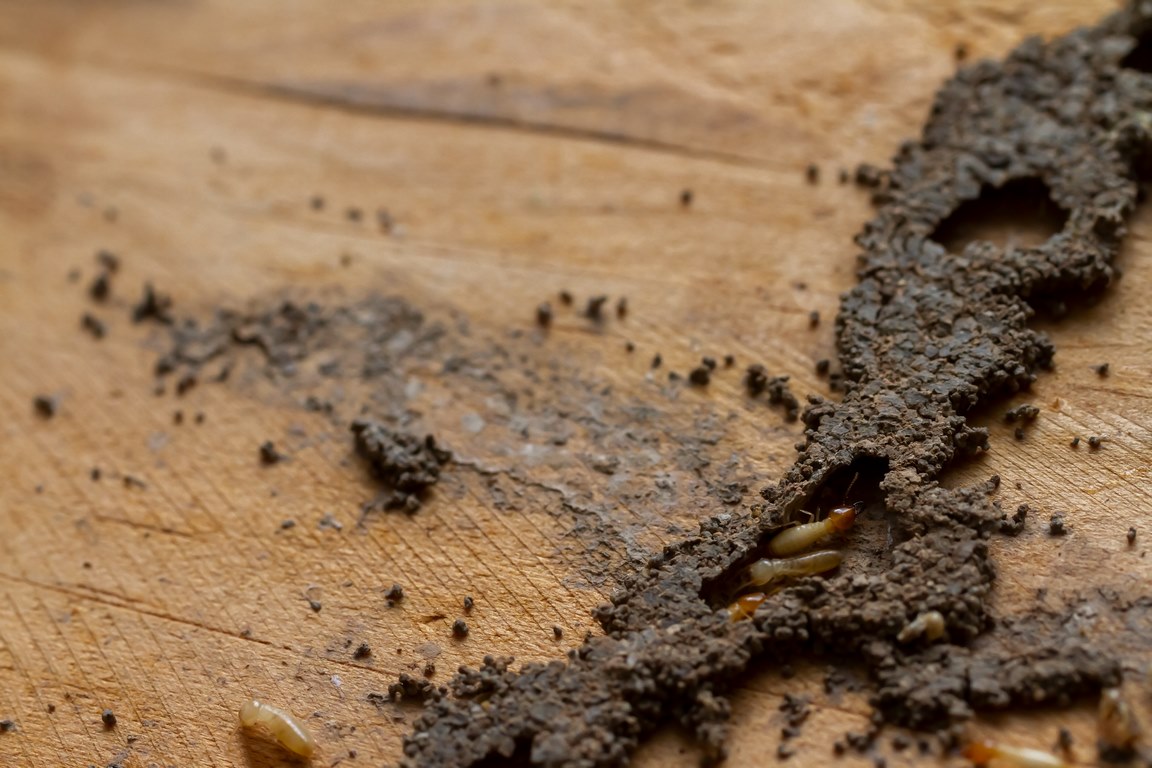Termites are helpful in the natural world, but they’re bad news once they access your property. They gnaw on everything that’s made of wood in your home—floors, beams, walls, ceilings, or furniture.
Moreover, termites can feed on the carpet, insulation, and even fabrics! They can build their colony anywhere in your home without you knowing it.

While termites may silently destroy your home, you can always spot some subtle signs. For instance, fallen wings or droppings can indicate their presence.
Likewise, if you notice your wooden structures are sagging or sound hollow, you probably have a termite problem. All these signs require you to take action before termites further damage your home.
You’ll find several options when it comes to termite treatment, such as termite baits and wood treatments.
Pest control professionals can explain which one works best for your property now and for the future. Your choices will largely depend on the following:
Your home’s condition says a lot about termite control. If you’re still in the process of building your house, termite control consists of preventive measures.
Using pre-treated wood, spraying liquid termiticides, and creating soil barriers can deter termites from invading your home. These treatments also apply to home extensions that use wood as a building material.
If you bought an older home, a pest inspection is your best bet. Specialists at Fulcrum Pest Control or any other termite exterminator can thoroughly sweep your home to check for termite activity and assess the damage.
In addition, they will consider your proximity to water sources or wildlife before recommending a treatment option.
There are 2,000 known species of termites globally, and one of them can threaten your home. Termites vary in appearance and wood preference, so it’s best to understand what you’re dealing with.
Subterranean and Formosan termites live in the soil and use mud tubes to travel in and out of wood structures. They favor moist and secluded areas, such as the home’s foundation or your garden.
In contrast, conehead termites don’t depend on underground tunnels but forage like ants. They can spread quickly and cause widespread damage to any kind of property.
Dampwood and dry wood termites build their colonies directly on the wood. The only difference is that damp wood termites infest wood with high moisture content, such as the exposed wood of patios and decks.
Drywood termites don’t need much moisture and prefer roof materials and wooden wall supports as nesting grounds.
Different types of termites usually require other extermination methods. What can work for one may not be as effective in killing another.
Termiticide, baits, and sprays usually work for subterranean, Formosan, and conehead termites. Furthermore, soil treatments can prevent them from spreading and effectively eliminate them.
Liquid repellents work well for both damp wood and drywood species. Borate-based products can get rid of dampwood termites while orange oil works best for dry wood termites. There are other chemical and natural-based remedies to eliminate these pests as well.
Read Also:
Termite treatments can treat infestations but may also affect certain family members and your pets. If possible, choose family-friendly and pet-friendly options.
This kind of option will lower the risk of younger kids and older family members developing allergies and other illnesses.
Additionally, greener options can prevent poisoning in pets. Dogs and cats tend to lick on surfaces inside and outside the home. Hence, it’s best to ask exterminators if they have treatment options that will not threaten your pet’s health.
Aside from family and pets, consider how termiticides and other types of termite treatment affect your landscape. Some chemicals may be harmless for humans and animals but may threaten indoor and outdoor plants. As much as possible, opt for a termite solution that has little or no effect on your plants.
Termite control professionals consider the extent of the infestation too. They will inform you if you need to move out on the extermination day or simply isolate one or several rooms.
Spot-on treatment is suitable if termite damage is confined to a specific area of your home. Exterminators drill holes into your foundation and wood, injecting liquid termite treatments to force them out of their habitats.
Heat treatments and spraying termiticides work well for mild termite infestation. However, if the infestation extends to most house parts and wooden furniture, you’ll need more aggressive treatment options.
Termite tenting is usually the last resort. This extermination method uses toxic fumes to draw out and kill termite colonies. A tent is placed over your home to ensure that the gas penetrates all possible surfaces, nooks, and crannies.
You need to consider several factors when choosing the right termite solution. For a new home, termite control serves as a proactive measure.
But if there are termites already on your property, the treatment option you select should be specific to the termite species and level of infestation.
Don’t forget to prioritize eco-friendly termite treatments that will not only get rid of the pests effectively but also keep family, pets, and plants safe.